News
Sheridan Le Fanu’s ‘Carmilla’ and the Birth of the Predatory Lesbian Vampire
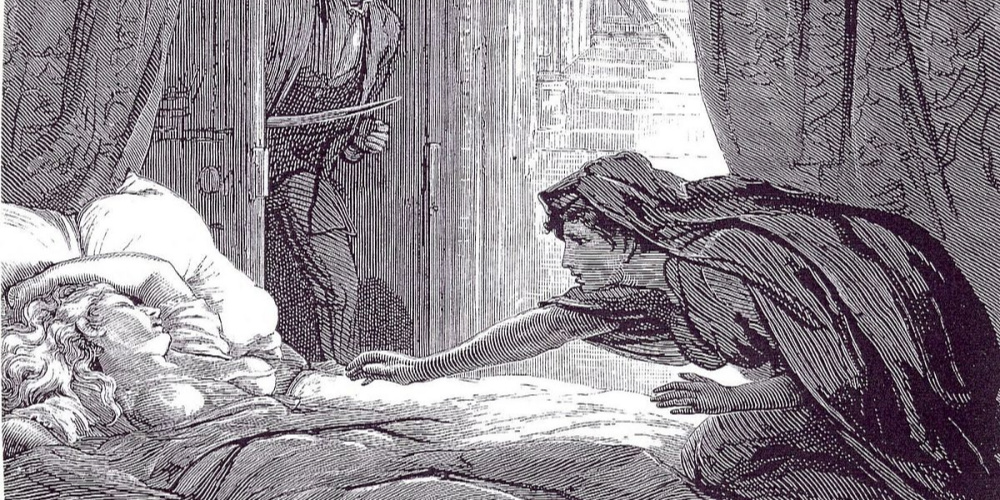
In 1872, Irish author Sheridan Le Fanu published Carmilla, a novella in serial form that would reshape the vampire fiction subgenre for all time. The tale of a young woman under siege by a beautiful and sensual female vampire sparked the imaginations of his readers then and would eventually become one of the most adapted novellas of all time, taking its place next to other queer classics including The Picture of Dorian Gray and Dracula both of which it predates.
The Life of Sheridan Le Fanu
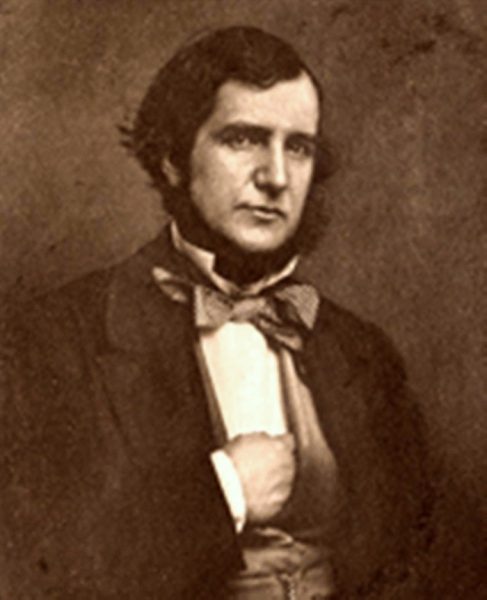
Sheridan Le Fanu
James Thomas Sheridan Le Fanu was born into a literary family on August 28, 1814. His father, Thomas Philip Le Fanu was a Church of Ireland clergyman and his mother Emma Lucretia Dobbin was a writer whose most famous work was a biography of Dr. Charles Orpen, an Irish doctor and clergyman who founded the Claremont Institution for the Deaf and Dumb in Glasnevin, Dublin.
Le Fanu’s grandmother, Alicia Sheridan Le Fanu, and his great-uncle Richard Brinsley Butler Sheridan were both playwrights and his niece Rhoda Broughton became a successful novelist.
In his early adult life, Le Fanu studied law at Trinity College in Dublin but never actually practiced the profession, leaving it behind to move into journalism instead. He would go on to own several newspapers in his life including the Dublin Evening Mail which delivered evening newspapers for almost 140 years.
It was during this time that Sheridan Le Fanu began building his reputation as a writer of Gothic fiction beginning with “The Ghost and the Bone-Setter” which was first published in 1838 in the Dublin University Magazine and became part of his future collection The Purcell Papers, a collection of stories all reportedly taken from the private writings of a parish priest named Father Purcell.
In 1844, Le Fanu married Susanna Bennett and the couple would have four children together. Susanna suffered from “hysteria” and “neurotic symptoms” which worsened over time and in 1858, she died after a “hysterical attack.” Le Fanu did not write a single story for three years following the death of Susanna. In fact, he did not pick up his pen to write anything other than personal correspondence again until after the death of his mother in 1861.
From 1861 until his death in 1873, however, Le Fanu’s writing became prolific. He published multiple stories, collections and novellas including Carmilla, first published as a serial and then in his collection of stories titled In a Glass Darkly.
Carmilla

By Michael Fitzgerald (fl. 1871 – 1891) – Haunted Images: The Illustrating of Le Fanu at jslefanu.com, Public Domain
Presented as a case study by Dr. Hesselius, a sort of occult detective, the novella is narrated by a beautiful young woman named Laura who lives with her father in solitary castle in southern Austria.
As a child, Laura has a vision of a woman who visited her in her private chambers and claims to have been pierced in the breast by the woman, though no wound is ever found.
Flash forward twelve years later, Laura and her father are still quite happy when a strange and beautiful young woman named Carmilla arrives at their door after a carriage accident. There is a moment of instant recognition between Laura and Carmilla. They seem to remember each other from dreams they had as children.
Carmilla’s “mother” arranges for the young woman to stay with Laura and her father at the castle until she can be retrieved and soon the two have become the best of friends despite the former’s peculiarities. Carmilla steadfastly refuses to join the family in prayers, sleeps through much of the day, and sometimes seems to sleepwalk at night. She also makes romantic advances toward Laura from time to time.
Meanwhile, in the nearby village, young women begin dying of a strange inexplicable illness. As the death count rises, so does fear and hysteria in the village.
A shipment of paintings arrives at the castle, and among them is a painting of Mircalla, Countess Karnstein, an ancestor of Laura’s who is identical to Carmilla.
Laura begins to have nightmares about a strange feline beast that enters her room at night and attacks her, piercing her breast with its teeth before taking on the form of a beautiful woman and disappearing out the window.
Laura’s health soon begins to decline and after a doctor discovers a small puncture wound on her breast, her father is instructed not to leave her alone.
The story progresses from there as so many do. It is discovered that Carmilla and Mircalla are one and the same and she is soon dispatched by having her head removed after which they burn her body and throw her ashes into a river.
Laura never fully recovers from her ordeal.
Carmilla‘s Underlying and Not So Underlying Lesbian Themes
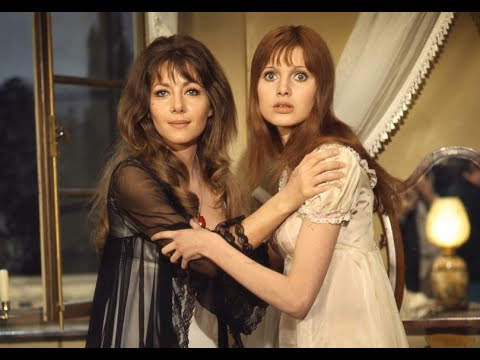
A scene from The Vampire Lovers, an adaptation of Carmilla
From almost their first meeting, there is an attraction between Laura and Carmilla that has sparked much debate, especially among modern scholars in queer theory.
On the one hand, there is an undeniable seduction happening within the 108 or so pages of the story. At the same time, however, it is hard not to read that seduction as predatory considering that Carmilla’s ultimate goal is to steal Laura’s life.
Le Fanu, himself, left the story very vague. The advances and seduction, really anything that pointed toward a lesbian relationship between the two, appears as very subtle subtext. This was absolutely necessary at the time and one has to wonder if the man had written the novel even 30 years later how differently the story might have been written.
Nonetheless, Carmilla became the blueprint for the lesbian vampire character which would become a dominant theme in literature and in film in the 20th century.
She only preys on women and girls. She develops close personal relationship with some of her female victims with an undeniable erotic and romantic edge to those relationships.
Further, her animal form was a large black cat, a recognizable literary symbol of witchcraft, magic, and female sexuality.
When all of these themes are taken together, Carmilla/Mircalla becomes a blatant lesbian character with the social and sexual mores of 19th century thrust upon her including the maxim that she should die in the end.
Carmilla’s Legacy
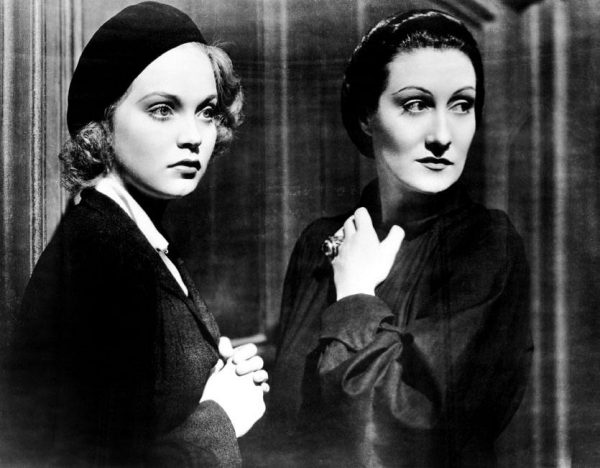
A still from Dracula’s Daughter
Carmilla might not have been the vampire story everyone was talking about as the 19th century ended, but it had left an indelible mark on genre fiction and by the early 20th century as film became a more popular medium, it was ripe for adaptation.
I won’t go into all of them–there are a lot–but I do want to hit a few highlights, and point out how the character’s story was handled.
One of the earliest examples of this came in 1936’s Dracula’s Daughter. A sequel to 1931’s Dracula, the film starred Gloria Holden as Countess Marya Zaleska and drew heavily upon Carmilla‘s themes of the predatory lesbian vampire. By the time the film was made, the Hays Code was firmly in place which made the novella a rather perfect choice for source material.
Interestingly, the Countess struggles in the film to find a way to rid herself of her “unnatural desires” but ultimately gives in time and again, choosing beautiful women as her victims including Lili, a young woman brought to the Countess under the deceptive premise of modeling.
Naturally, Marya is destroyed at the end of the film after being shot through the heart with a wooden arrow.
Later on in 1972, Hammer Horror produced a very faithful adaptation of the story titled The Vampire Lovers, this time with Ingrid Pitt in the leading role. Hammer pulled out all the stops, heightening the erotic nature of the story and relationship between Carmilla and her victim/lover. The film was part of the Karnstein trilogy which expanded upon the mythos of Le Fanu’s original story and brought the lesbian subtext to the foreground.
Carmilla made the leap into anime in 2000’s Vampire Hunter D: Bloodlust which features the archetypal vampire as the central protagonist. She has, at the beginning of the story, been destroyed by Dracula, himself, but her spirit lives on and attempts to bring about her own resurrection through the use of virgin blood.
It wasn’t only filmmakers who found their inspiration in the story, however.
In 1991, Aircel Comics released a six-issue, black and whit, highly erotic adaptation of the story titled Carmilla.
Award-winning author Theodora Goss flipped the script on the narrative of the original story in her novel European Travel for the Monstrous Gentlewoman. The novel was the second in a series of books titled The Extraordinary Adventures of the Athena Club which focuses on the children of some of literature’s most famous “mad scientists” fighting the good fight and protecting each other from the demented Professor Abraham Van Helsing and his machinations.
In the novel, the Athena Club finds Carmilla and Laura living a rather happy life together and the two eventually aid the club in their adventure and it was honestly a breath of fresh air to the novella’s legacy.
The Vampire and the LGBTQ Community
I do not know for a fact that Sheridan Le Fanu set out to intentionally paint lesbians as predatory and evil, but I do think that he was working from the social ideas of his time and reading his story gives us a rather pointed insight into what the Irish society thought of the “other.”
For a woman to be less than feminine, to take on a role of power, and to not concern herself with family and child-bearing was not unheard of in Ireland at the time, but it was still frowned upon in many social circles. These women were looked upon with a certain amount of distrust, certainly, but when Le Fanu took those views a step further by turning them to monsters, it took on a different light entirely.
I have often wondered if Carmilla wasn’t written in direct response to his wife’s death in some way. Could it be that her descent into “fits of hysteria” as they were called at the time and her clinging to religion as her health deteriorated inspired the character of Laura?
Regardless of his original intentions, Sheridan Le Fanu inextricably tied lesbians to predatory genre monsters and those ideas carried forward in both negative and positive ways through the 20th and into the 21st century.
Books, movies, and art in general inform ideas. They are both reflections and catalysts within society, and this trope endures for a reason. Sexualizing and inserting the predatory narrative detracts from the possibility of positive healthy relationships between two women and reduces them to purely physical connections.
He was hardly the first and far from the last who painted a picture of the sexually fluid vampire. Anne Rice has made a fortune writing exquisite novels filled with them. In Rice’s novels, however, it is never that sexuality that makes one a “good” or “bad” vampire. Instead, it is the content of their character and how they treat their fellows.
Despite all of this, I still recommend reading the novella. Carmilla is a fascinating story and window into our community’s past.
'Civil War' Review: Is It Worth Watching?
Follow our new YouTube channel "Mysteries and Movies" here.

Lists
Thrills and Chills: Ranking ‘Radio Silence’ Films from Bloody Brilliant to Just Bloody
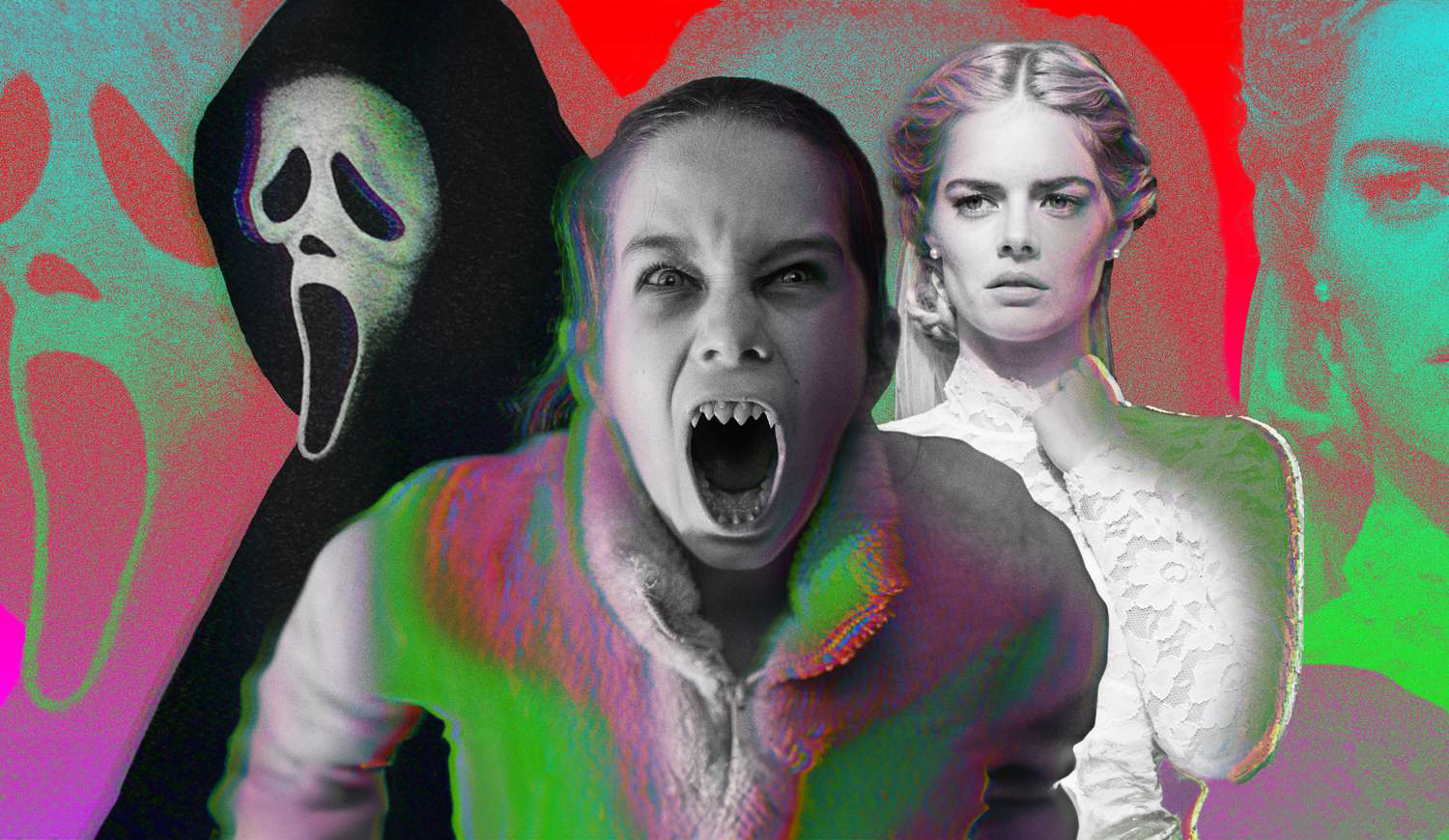
Matt Bettinelli-Olpin, Tyler Gillett, and Chad Villella are all filmmakers under the collective label called Radio Silence. Bettinelli-Olpin and Gillett are the primary directors under that moniker while Villella produces.
They have gained popularity over the past 13 years and their films have become known as having a certain Radio Silence “signature.” They are bloody, usually contain monsters, and have breakneck action sequences. Their recent film Abigail exemplifies that signature and is perhaps their best film yet. They are currently working on a reboot of John Carpenter’s Escape From New York.
We thought we would go through the list of projects they have directed and rank them from high to low. None of the movies and shorts on this list are bad, they all have their merits. These rankings from top to bottom are just ones we felt showcased their talents the best.
We didn’t include movies they produced but didn’t direct.
#1. Abigail
An update to the second film on this list, Abagail is the natural progression of Radio Silence’s love of lockdown horror. It follows in pretty much the same footsteps of Ready or Not, but manages to go one better — make it about vampires.
#2. Ready or Not
This film put Radio Silence on the map. While not as successful at the box office as some of their other films, Ready or Not proved that the team could step outside their limited anthology space and create a fun, thrilling, and bloody adventure-length film.
#3. Scream (2022)
While Scream will always be a polarizing franchise, this prequel, sequel, reboot — however you want to label it showed just how much Radio Silence knew the source material. It wasn’t lazy or cash-grabby, just a good time with legendary characters we love and new ones who grew on us.
#4 Southbound (The Way Out)
Radio Silence tosses their found footage modus operandi for this anthology film. Responsible for the bookend stories, they create a terrifying world in their segment titled The Way Out, which involves strange floating beings and some sort of time loop. It’s kind of the first time we see their work without a shaky cam. If we were to rank this entire film, it would remain at this position on the list.
#5. V/H/S (10/31/98)
The film that started it all for Radio Silence. Or should we say the segment that started it all. Even though this isn’t feature-length what they managed to do with the time they had was very good. Their chapter was titled 10/31/98, a found-footage short involving a group of friends who crash what they think is a staged exorcism only to learn not to assume things on Halloween night.
#6. Scream VI
Cranking up the action, moving to the big city and letting Ghostface use a shotgun, Scream VI turned the franchise on its head. Like their first one, this film played with canon and managed to win over a lot of fans in its direction, but alienated others for coloring too far outside the lines of Wes Craven’s beloved series. If any sequel was showing how the trope was going stale it was Scream VI, but it managed to squeeze some fresh blood out of this nearly three-decade mainstay.
#7. Devil’s Due
Fairly underrated, this, Radio Silence’s first feature-length film, is a sampler of things they took from V/H/S. It was filmed in an omnipresent found footage style, showcasing a form of possession, and features clueless men. Since this was their first bonafide major studio job it’s a wonderful touchstone to see how far they have come with their storytelling.
'Civil War' Review: Is It Worth Watching?
Follow our new YouTube channel "Mysteries and Movies" here.
News
Perhaps the Scariest, Most Disturbing Series of The Year

You may have never heard of Richard Gadd, but that will probably change after this month. His mini-series Baby Reindeer just hit Netflix and it’s a terrifying deep dive into abuse, addiction, and mental illness. What is even scarier is that it’s based on Gadd’s real-life hardships.
The crux of the story is about a man named Donny Dunn played by Gadd who wants to be a stand-up comedian, but it’s not working out so well thanks to stage fright stemming from his insecurity.
One day at his day job he meets a woman named Martha, played to unhinged perfection by Jessica Gunning, who is instantly charmed by Donny’s kindness and good looks. It doesn’t take long before she nicknames him “Baby Reindeer” and begins to relentlessly stalk him. But that is just the apex of Donny’s problems, he has his own incredibly disturbing issues.
This mini-series should come with a lot of triggers, so just be warned it is not for the faint of heart. The horrors here don’t come from blood and gore, but from physical and mental abuse that go beyond any physiological thriller you may have ever seen.
“It’s very emotionally true, obviously: I was severely stalked and severely abused,” Gadd said to People, explaining why he changed some aspects of the story. “But we wanted it to exist in the sphere of art, as well as protect the people it’s based on.”
The series has gained momentum thanks to positive word-of-mouth, and Gadd is getting used to the notoriety.
“It’s clearly struck a chord,” he told The Guardian. “I really did believe in it, but it’s taken off so quickly that I do feel a bit windswept.”
You can stream Baby Reindeer on Netflix right now.
If you or someone you know has been sexually assaulted, please contact the National Sexual Assault Hotline at 1-800-656-HOPE (4673) or go to rainn.org.
'Civil War' Review: Is It Worth Watching?
Follow our new YouTube channel "Mysteries and Movies" here.
Movies
The Original ‘Beetlejuice’ Sequel Had an Interesting Location
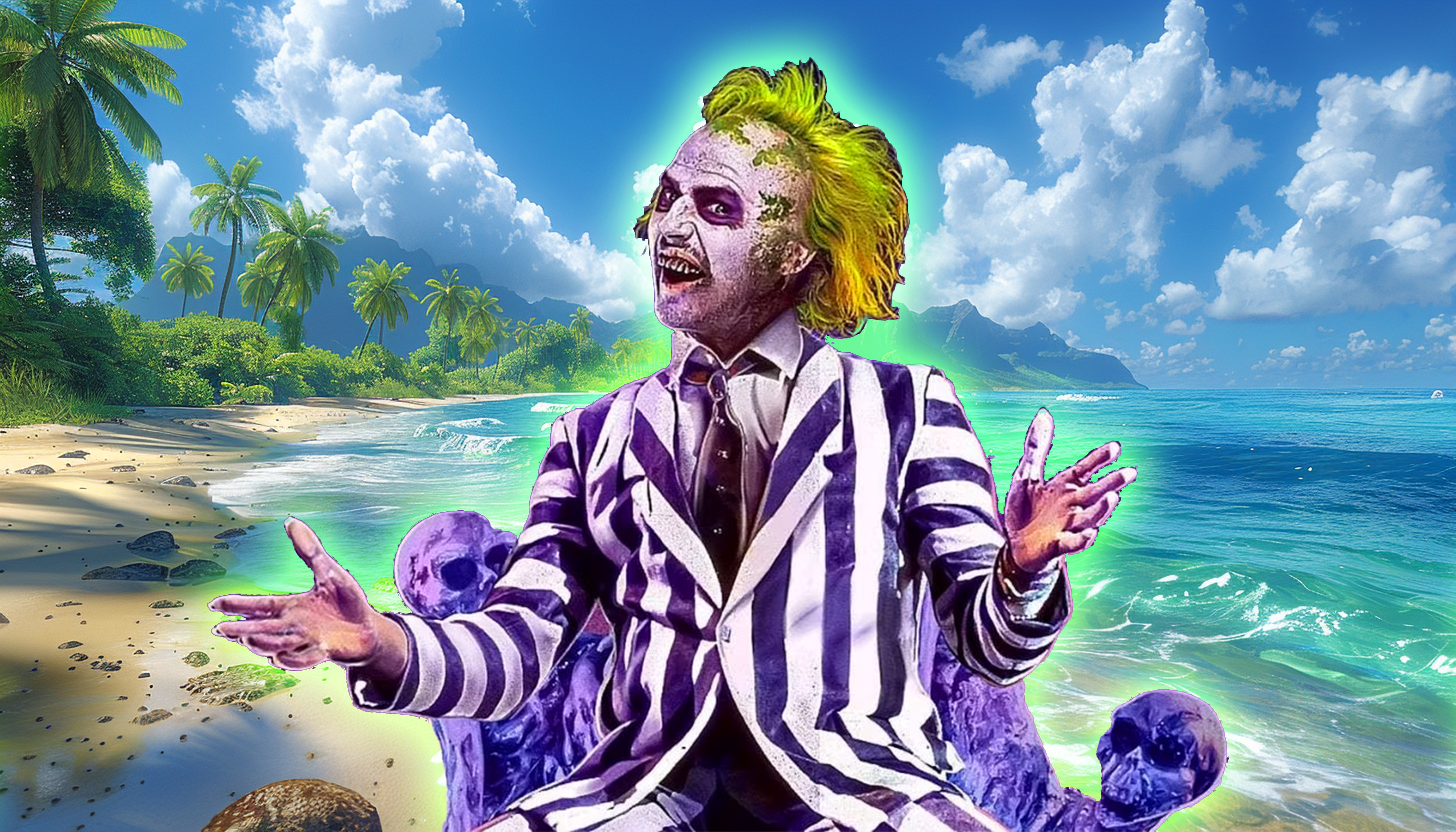
Back in the late ’80s and early ’90s sequels to hit movies weren’t as linear as they are today. It was more like “let’s re-do the situation but in a different location.” Remember Speed 2, or National Lampoon’s European Vacation? Even Aliens, as good as it is, follows a lot of the plot points of the original; people stuck on a ship, an android, a little girl in peril instead of a cat. So it makes sense that one of the most popular supernatural comedies of all time, Beetlejuice would follow the same pattern.
In 1991 Tim Burton was interested in doing a sequel to his 1988 original, it was called Beetlejuice Goes Hawaiian:
“The Deetz family moves to Hawaii to develop a resort. Construction begins, and it’s quickly discovered that the hotel will be sitting on top of an ancient burial ground. Beetlejuice comes in to save the day.”
Burton liked the script but wanted some re-writes so he asked then-hot screenwriter Daniel Waters who had just got done contributing to Heathers. He passed on the opportunity so producer David Geffen offered it to Troop Beverly Hills scribe Pamela Norris to no avail.
Eventually, Warner Bros. asked Kevin Smith to punch up Beetlejuice Goes Hawaiian, he scoffed at the idea, saying, “Didn’t we say all we needed to say in the first Beetlejuice? Must we go tropical?”
Nine years later the sequel was killed. The studio said Winona Ryder was now too old for the part and an entire re-cast needed to happen. But Burton never gave up, there were a lot of directions he wanted to take his characters, including a Disney crossover.
“We talked about lots of different things,” the director said in Entertainment Weekly. “That was early on when we were going, Beetlejuice and the Haunted Mansion, Beetlejuice Goes West, whatever. Lots of things came up.”
Fast-forward to 2011 when another script was pitched for a sequel. This time the writer of Burton’s Dark Shadows, Seth Grahame-Smith was hired and he wanted to make sure the story wasn’t a cash-grabbing remake or reboot. Four years later, in 2015, a script was approved with both Ryder and Keaton saying they would return to their respective roles. In 2017 that script was revamped and then eventually shelved in 2019.
During the time the sequel script was being tossed around in Hollywood, in 2016 an artist named Alex Murillo posted what looked like one-sheets for a Beetlejuice sequel. Although they were fabricated and had no affiliation with Warner Bros. people thought they were real.
Perhaps the virality of the artwork sparked interest in a Beetlejuice sequel once again, and finally, it was confirmed in 2022 Beetlejuice 2 had a green light from a script written by Wednesday writers Alfred Gough and Miles Millar. The star of that series Jenna Ortega signed on to the new movie with filming starting in 2023. It was also confirmed that Danny Elfman would return to do the score.
Burton and Keaton agreed that the new film titled Beetlejuice, Beetlejuice wouldn’t rely on CGI or other other forms of technology. They wanted the film to feel “handmade.” The film wrapped in November 2023.
It’s been over three decades to come up with a sequel to Beetlejuice. Hopefully, since they said aloha to Beetlejuice Goes Hawaiian there has been enough time and creativity to ensure Beetlejuice, Beetlejuice will not only honor the characters, but fans of the original.
Beetlejuice, Beetlejuice will open theatrically on September 6.
'Civil War' Review: Is It Worth Watching?
Follow our new YouTube channel "Mysteries and Movies" here.
-

 News6 days ago
News6 days agoWoman Brings Corpse Into Bank To Sign Loan Papers
-

 News7 days ago
News7 days agoHome Depot’s 12-Foot Skeleton Returns with a New Friend, Plus New Life-Size Prop from Spirit Halloween
-

 News5 days ago
News5 days agoBrad Dourif Says He’s Retiring Except For One Important Role
-

 Strange and Unusual5 days ago
Strange and Unusual5 days agoMan Arrested for Allegedly Taking a Severed Leg From Crash Site And Eating It
-

 Movies6 days ago
Movies6 days agoPart Concert, Part Horror Movie M. Night Shyamalan’s ‘Trap’ Trailer Released
-

 Movies7 days ago
Movies7 days ago‘The Strangers’ Invaded Coachella in Instagramable PR Stunt
-

 Movies6 days ago
Movies6 days agoAnother Creepy Spider Movie Hits Shudder This Month
-
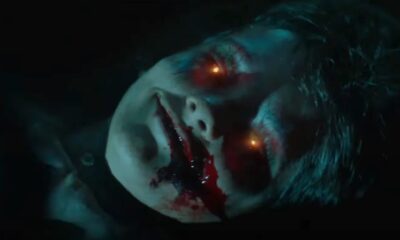
 Movies7 days ago
Movies7 days agoRenny Harlin’s Recent Horror Movie ‘Refuge’ Releasing in U.S. This Month
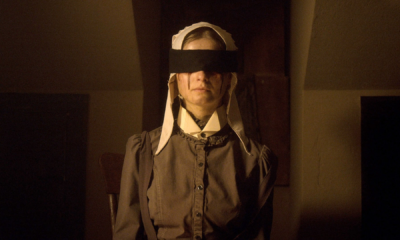

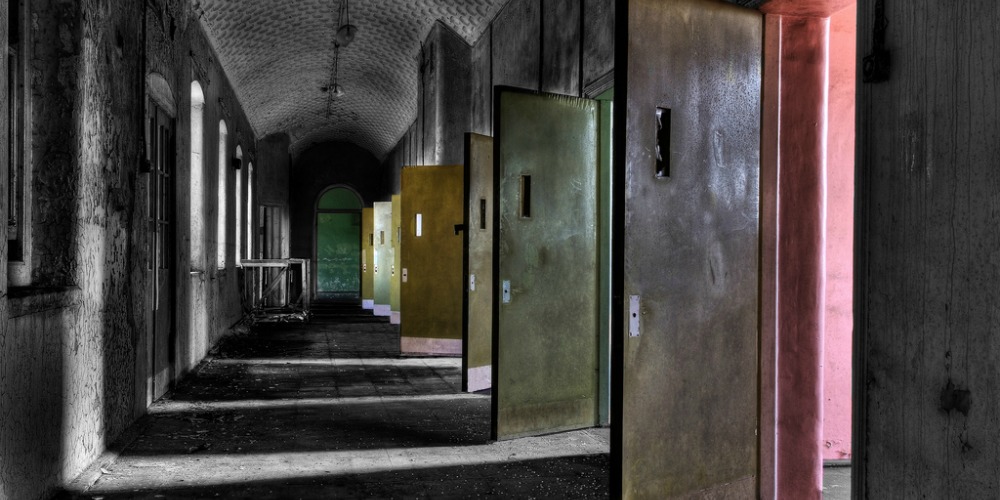




















You must be logged in to post a comment Login